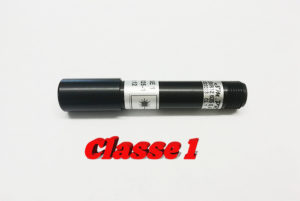Do you know what the safety of a laser pointer consists of? And what is the meaning of the Laser Class? Laser radiation can be dangerous for your eyes, do you know how to protect yourself?
Laser devices are classified according to different safety classes based on the risk of injury to the eyes and skin for the operator, as well as the power and wavelength of the laser. Electrical, mechanical, chemical, or secondary optical radiation risks are excluded. The risk of injury increases as the safety class increases.
Let’s see why Class 1 laser pointers are safe.
Meanwhile the definition:
Lasers that are safe under reasonably foreseeable operating conditions, including the use of optical instruments for viewing the beam. Therefore, safe during use, including direct, long-term intra-beam vision. Intra-beam vision from Class 1 laser products emitting visible radiant energy may still produce dazzling visual effects, particularly in low ambient light conditions. The term “eye-safe” can therefore only be used for Class 1 laser products. To go into more detail, Class 1 laser pointers are safe because the EN60825-1:2015-12 and 2017-06 Standards define that “the laser product is in Class 1 when, during its operation, it does not allow human access to accessible laser radiation (LEA) above certain emission limits”.
And what are the LEA limits for Class 1 laser products?
The answer is always found in the EN60825-1:2017-06 Standard, in the appropriate table: Class 1 and Class 1M laser products have a limit of 0.39mW.
Does this mean I can aim a Class 1 laser pointer directly at my eyes without any problem?
No, and the answer is always given by the Standard where in the “Class Description” it states that, even if Class 1 laser products are safe during their use, direct vision of the beam for Class 1 lasers that emit radiant energy visible, it can however cause temporary dazzling effects, especially in low lighted environments.
Leaving aside the non-industrial use of laser pointers, in which applications is it recommended to use Class 1 laser pointers?
For example, in the medical field, when a line, red or green, must be pointed at a person’s skin during a medical examination. Or in the textile or even packaging industry, if you need a dot, red or green, to align an object at a relatively short distance and you want to be sure of using a non-hazardous laser pointer.
Consult the technical data sheet: SM322003-LSVR12-635-0,4-T20-60-Y



